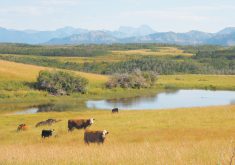Editor’s note: This is the fourth of a series of columns looking at the lessons learned from the financial crisis of 2008.
There’s no sure-fire way for a farm protect itself against crash risk.
The 2008-09 financial crisis proved that, and it sent a shockwave through the farming and agriculture industries, causing immense damage and disruption.
But Scott Irwin, a University of Illinois agricultural economist who has made a lifelong study of commodity markets said farmers can protect themselves best by understanding what both the crisis and the commodity bull market taught.
Read Also

Huge Black Sea flax crop to provide stiff competition
Russia and Kazakhstan harvested huge flax crops and will be providing stiff competition in China and the EU.
“Understand that you’re in a commodity business that is high volume, low margin,” Irwin told me when I contacted him for this series.
“Any period of high prices, take advantage of that.”
Other stories in this series:
- Remembering the lessons from the 2008 financial crisis
- Hedging makes sense, but manage them
- Knowing your lender when times get rough pays dividends
- 2008 crisis showed importance of interest rates
- Farmers can learn lessons from 2008 financial crisis
- Financial crisis of 2008 helped test market theories
The impacts of the financial crisis were not simple for agriculture and farming, since the sector was affected differently than other sectors by both the crisis itself and the commodity bull market that began charging before the crisis and continued after the smoke of the crash had cleared.
Agricultural commodities were slow to take off in the early 2000s, but soared from 2006-08. Then they collapsed with everything else in 2008-09. Then they rebounded and soared again in the early 2010s. Finally, 2013 brought a return to low-margin years that had been typical before 2006.
Irwin draws these conclusions from that history:
When there is a crash, “all (supply and demand fundamentals) were just overwhelmed by the floodwaters of the crisis. When the floodwaters recede, supply and demand factors come back.”
In fact, 1930s economic history shows commodities coming back stronger than most other asset classes in a depression atmosphere.
So commodities can soar, crash and soar again, but farmers shouldn’t be counting on those high points for their general operating assumptions. Rather, they should enjoy those spikes and take advantage of them to shore-up their businesses for the next bad patch.
“Try to restrain impulses to overstretch your finances,” said Irwin.
When it comes to specific methods to insure against crash risk, Irwin said there is no easy, effective or cheap way to do it.
“It happens infrequently,” he said, highlighting the challenge.
“These kinds of crashes are very hard to forecast.”
So that means prudent business financial management is key, both for long-term low-margin production and to cushion against shocks: production insurance; a cash-heavy balance sheet; low debt.
In the end, looking back at the financial crisis and the commodity bull market that bookended it doesn’t necessarily bring bold new understandings of the nature of agricultural risk, but it verifies what we’ve always known.
“Expect to manage a business that has very low margins.”


















